Electrical tools are essential for any electrical work‚ ranging from basic hand tools to advanced power tools․ This guide provides a comprehensive list of tools‚ including screwdrivers‚ pliers‚ drills‚ and safety equipment‚ along with their uses and pictures․ Whether you’re a professional electrician or a beginner‚ understanding these tools is crucial for safe and efficient work․ Download the PDF guide for a quick reference to electrical tools names‚ images‚ and their applications in various projects․
Overview of Electrical Tools
Electrical tools encompass a wide range of devices used for installation‚ maintenance‚ and repair of electrical systems․ They include hand tools like screwdrivers‚ pliers‚ and wrenches‚ as well as power tools such as drills and impact wrenches․ Safety equipment‚ like insulated tools and safety glasses‚ is also essential․ These tools are categorized into measuring tools (e․g;‚ tape measures‚ multimeters)‚ fastening tools (e․g․‚ cable ties‚ crimping tools)‚ and protective gear․ Having the right tools ensures efficiency and safety in electrical work․ A tool belt or organized bag helps keep everything accessible․
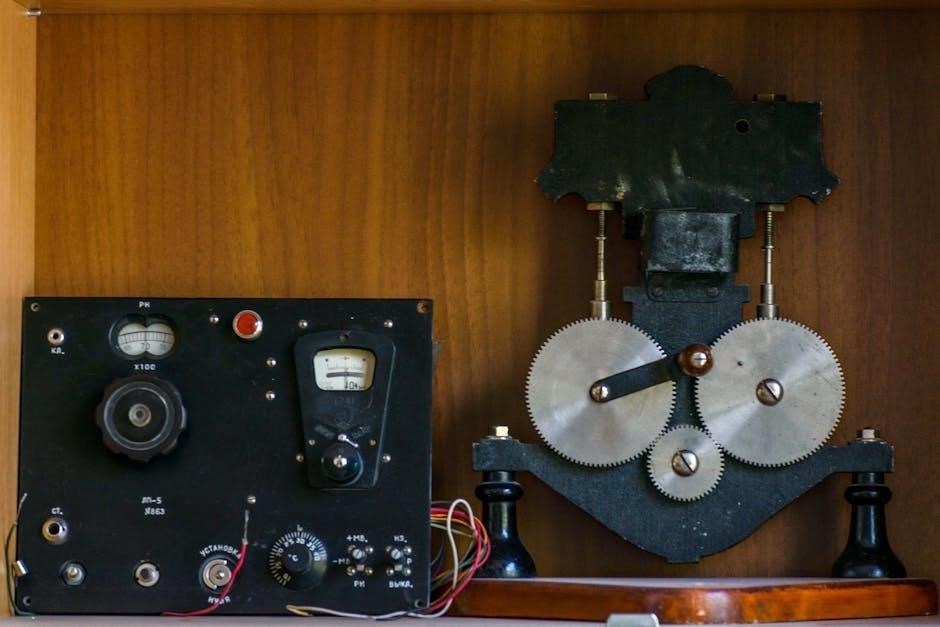
Hand Tools for Electricians
Hand tools for electricians are essential for gripping‚ twisting‚ and shaping materials․ Common tools include screwdrivers‚ pliers‚ hammers‚ and wrenches‚ ensuring durability and precision in electrical tasks․
Screwdrivers
Screwdrivers are among the most essential hand tools for electricians‚ available in flathead and Phillips types․ They are used for driving screws and tightening or loosening connections․ Insulated screwdrivers are recommended for working with live circuits‚ ensuring safety from electric shock․ Durable handles and tips provide precision and comfort during tasks․ Screwdrivers are indispensable for various electrical projects‚ from installing outlets to repairing devices․ Proper selection and maintenance of screwdrivers are crucial for efficient and safe electrical work․
Pliers
Pliers are versatile hand tools essential for gripping‚ bending‚ and twisting objects in electrical work․ Common types include needle-nose pliers for reaching tight spaces and slip-joint pliers for gripping various sizes of wires or components․ Insulated pliers are recommended for working with live circuits‚ providing protection against electric shock․ Durable and ergonomic designs ensure comfort during extended use․ Pliers are indispensable for tasks like wire stripping‚ bending‚ and tightening connections‚ making them a must-have in every electrician’s toolkit for safe and efficient electrical projects․
Hammers
Hammers are essential tools for electricians‚ used for driving nails‚ fitting parts‚ and breaking apart objects․ The claw hammer is common for pulling nails‚ while ball-peen hammers are ideal for metalwork․ Insulated handles reduce shock risks‚ and ergonomic grips improve control․ Hammers are vital for installing electrical components‚ such as securing wires or tapping connectors into place․ Their versatility and durability make them a cornerstone in every electrician’s toolkit‚ ensuring reliable performance in various electrical tasks and projects․
Wrenches
Wrenches are versatile tools used by electricians for gripping and twisting objects like bolts and nuts․ Adjustable wrenches are handy for various sizes‚ while fixed wrenches offer precision for specific tasks․ Insulated wrenches protect against electrical shock‚ making them safe for live circuits․ They are essential for tightening connectors‚ securing panels‚ and loosening corroded fittings․ Durable and reliable‚ wrenches are indispensable in electrical work‚ ensuring secure connections and efficient project completion․

Measuring and Testing Tools
Essential for precise electrical work‚ these tools include tape measures‚ digital multimeters‚ electrical tape‚ and levels․ They ensure accuracy in measurements‚ testing‚ and safe installations‚ preventing errors and hazards․
Tape Measure
A tape measure is a versatile tool used to measure distances‚ widths‚ and heights accurately․ It is essential for electrical installations‚ ensuring proper fitting of components and materials․ Available in various lengths‚ tape measures often feature both inch and millimeter markings for convenience․ Durable and portable‚ they are a must-have for electricians to ensure precise measurements‚ promoting safety and efficiency in all electrical projects․ Regular use helps prevent errors in wiring and equipment placement‚ making it a fundamental tool for professionals and DIY enthusiasts alike․
Digital Multimeter
A digital multimeter is an essential tool for measuring electrical properties such as voltage‚ current‚ resistance‚ and capacitance․ It is widely used for diagnosing and troubleshooting electrical circuits‚ ensuring safety and efficiency․ With its accurate readings and versatile functionality‚ it is a must-have for electricians and technicians․ The digital multimeter’s ability to test various electrical parameters makes it indispensable for maintaining and repairing electrical systems․ Its user-friendly interface and advanced features‚ like automatic ranging and data logging‚ enhance its utility in both professional and DIY settings․ Regular use of a digital multimeter helps prevent electrical hazards and ensures compliance with safety standards․
Electrical Tape

Electrical tape is a versatile tool used to insulate and protect wires‚ cables‚ and electrical connections․ It is made from durable materials like vinyl or rubber‚ ensuring long-lasting protection against moisture and abrasion․ Commonly available in various colors‚ electrical tape helps in identifying different phases or systems․ It is widely used for temporary repairs‚ securing wires‚ and preventing electrical shocks․ Electricians rely on it for its ease of use and effectiveness in maintaining safety and integrity in electrical installations․ Proper application of electrical tape is crucial to avoid hazards and ensure reliable connections․
Level
A level is an essential tool for ensuring surfaces are perfectly horizontal or vertical․ It is widely used in electrical installations to align components like switches‚ outlets‚ and panels․ Available in bubble or laser formats‚ levels provide precise measurements‚ preventing uneven installations that could lead to safety hazards․ Electricians rely on levels to maintain accuracy and professionalism in their work‚ ensuring all electrical systems are installed correctly and securely․ Proper use of a level guarantees a stable and safe electrical setup;

Power Tools for Electrical Work
Power tools like drills‚ impact wrenches‚ and soldering irons are indispensable for electrical tasks․ They enable efficient handling of wiring‚ fastening‚ and precision work‚ ensuring reliability and speed․
Drills
Drills are essential tools for electrical work‚ used for making holes in walls‚ wood‚ and other materials․ They are also used for driving screws in various applications․ Electric drills come in different types‚ including cordless‚ hammer‚ and right-angle drills‚ each suited for specific tasks․ Cordless drills offer portability‚ while hammer drills handle tough materials like concrete․ Right-angle drills are ideal for tight spaces․ Using the correct drill bits ensures efficiency and safety; Always maintain a firm grip and use safety goggles to protect against debris․ Refer to the PDF guide for detailed images and uses of different drill types․
Impact Wrench
An impact wrench is a powerful tool used for loosening bolts and nuts in electrical and construction tasks․ It delivers high torque through a hammering action‚ making it ideal for heavy-duty applications․ Available in electric‚ pneumatic‚ or hydraulic models‚ impact wrenches are versatile for various jobs․ They come in different drive sizes‚ such as 1/2″ or 1/4″‚ to suit specific tasks․ Safety tips include using impact-rated sockets‚ wearing safety goggles‚ and maintaining control during operation․ Regular maintenance‚ like lubricating moving parts‚ ensures longevity․ Refer to the PDF guide for detailed images and usage tips․
Soldering Iron
A soldering iron is a vital tool for connecting electrical components by melting solder․ It consists of a heated metal tip‚ handle‚ and power source․ Used to join wires‚ circuits‚ and electronic parts‚ it ensures secure connections․ Safety precautions include handling the iron with care to avoid burns and keeping it away from flammable materials․ Regular maintenance‚ like cleaning the tip‚ enhances performance․ The PDF guide provides images and detailed instructions for proper use and soldering techniques‚ making it an excellent resource for both beginners and professionals․
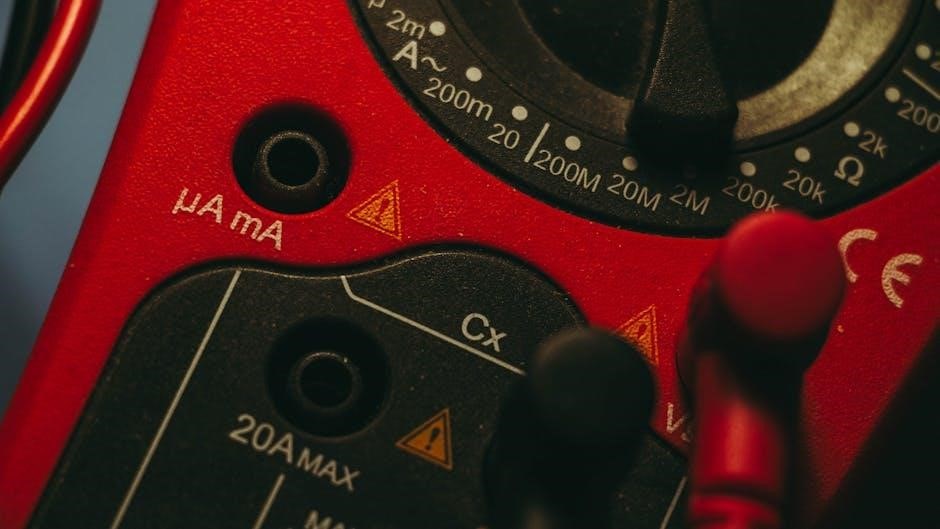
Fastening and Wire Management Tools
Essential for organizing and securing wires‚ these tools include cable ties‚ wire strippers‚ and crimping tools․ They ensure neat and safe electrical connections‚ as shown in the PDF guide․
Cable Ties
Cable ties are essential for organizing and securing wires in electrical systems․ Made from durable materials like nylon‚ they come in various sizes and colors for easy identification․ Reusable and adjustable‚ cable ties prevent wires from tangling and ensure neat installations․ They are widely used in both residential and industrial settings to enhance safety and efficiency․ The PDF guide provides detailed images and examples of how to use cable ties effectively in different electrical setups․ Proper use of cable ties is crucial for maintaining orderly and secure wire management systems․
Wire Strippers
Wire strippers are essential tools for electricians‚ used to safely remove insulation from electrical wires․ They come in manual and automatic versions‚ with adjustable blades to accommodate different wire gauges․ Manual strippers are cost-effective and ideal for small projects‚ while automatic models offer faster stripping for bulk work․ Proper use ensures clean‚ precise removal without damaging the conductor․ The PDF guide includes images and instructions for choosing the right wire stripper and using it effectively to maintain wire integrity and safety in electrical installations․
Crimping Tools
Crimping tools are used to securely attach connectors to electrical wires‚ ensuring reliable connections․ They come in manual‚ ratcheting‚ and hydraulic models‚ each suited for different wire gauges and connector types․ Proper crimping is essential to prevent loose connections and potential electrical hazards․ The PDF guide includes images of various crimpers and step-by-step instructions for correct usage‚ helping electricians achieve professional results in wire management and termination tasks efficiently and safely․
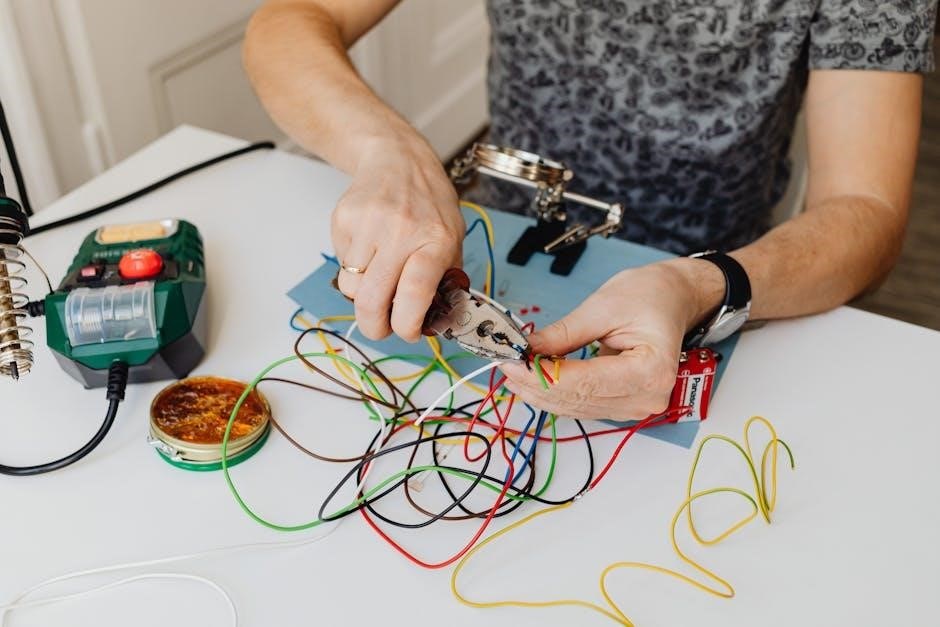
Safety Equipment
Safety equipment‚ such as insulated tools and safety glasses‚ protects electricians from electrical shocks and flying debris․ Essential for preventing accidents and ensuring compliance with workplace safety standards․
Insulated Tools
Insulated tools are designed to protect electricians from electrical shocks when working with live circuits․ Made from non-conductive materials‚ these tools ensure safety during high-voltage tasks․ Common examples include insulated screwdrivers‚ pliers‚ and wrenches‚ which are rated for specific voltage levels․ They are often color-coded to indicate their voltage rating‚ adhering to international standards like ASTM․ Regular inspection is crucial to maintain their insulating properties․ Insulated tools are a critical component of an electrician’s safety equipment‚ preventing accidents and ensuring compliance with safety regulations in hazardous environments․
Safety Glasses
Safety glasses are a fundamental component of personal protective equipment for electricians․ They protect the eyes from debris‚ sparks‚ and electrical arcs during work․ Lenses are typically made of impact-resistant materials like polycarbonate‚ offering excellent optical clarity․ Some models feature anti-fog coatings or UV protection for enhanced utility․ Proper fitting is essential to ensure comfort and effectiveness․ Safety glasses are a must-have for any electrician‚ providing critical protection against workplace hazards and preventing eye injuries that could result from flying particles or unexpected electrical discharges․
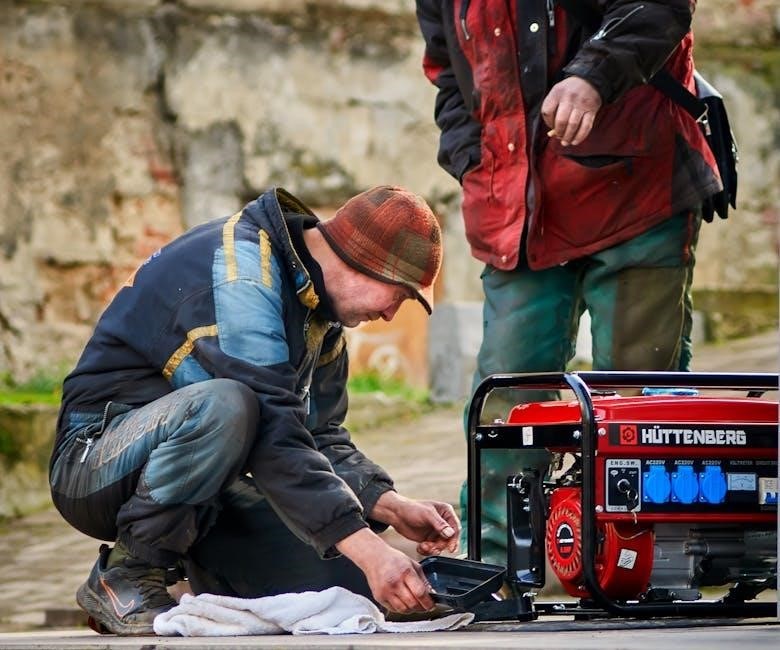
Tool Belts and Bags
Electrician tool belts and bags are essential for organizing and carrying tools․ They feature multiple pockets for small parts and specific slots for hand tools‚ ensuring efficiency and accessibility on the job․
Electrician Tool Belt
An electrician tool belt is designed to hold various tools and supplies‚ keeping them within easy reach․ It typically features multiple pockets and compartments‚ with some having specific slots for items like screwdrivers‚ pliers‚ and wire cutters․ Adjustable straps ensure a comfortable fit‚ allowing electricians to move freely while working․ The belt helps reduce time spent searching for tools‚ enhancing productivity․ Different styles cater to individual preferences and job requirements‚ making it a must-have for professionals in the field;
Tool Bag Organization
Proper organization of a tool bag is crucial for efficiency and safety․ Start by categorizing tools‚ placing frequently used items in easy-to-reach pockets․ Use dividers to separate hand tools from power tools‚ preventing damage and tangling of cords․ Label each section for quick identification‚ ensuring you can locate tools without rummaging․ Store smaller items like screws and connectors in sealed pouches to avoid loss․ Regularly clean and maintain the bag to prevent clutter buildup․ A well-organized tool bag saves time‚ reduces stress‚ and enhances productivity during electrical tasks․
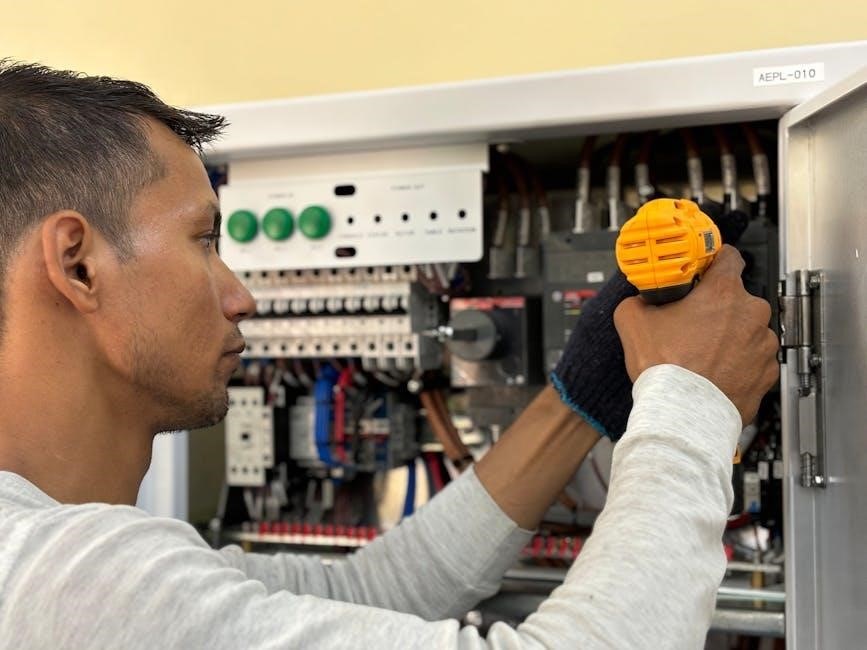
How to Use Electrical Tools Safely
Using electrical tools safely requires adherence to specific guidelines․ Ensure tools are inspected before use‚ avoid damaged cords‚ and keep work areas dry․ Always wear protective gear like safety glasses and gloves․ Follow manufacturer instructions and de-energize circuits when working with live electricity․ Proper tool handling and storage prevent accidents․ Regular maintenance of tools is essential to uphold safety standards and prevent malfunctions during operation․ Prioritize safety to protect yourself and others from potential hazards associated with electrical work․
General Safety Guidelines
Always maintain a clean and well-lit workspace to minimize accident risks․ Inspect tools before use to ensure they are in good condition․ Wear personal protective equipment (PPE) like safety glasses and gloves․ Keep loose clothing and long hair tied back when operating power tools; Avoid using damaged cords or tools near water to prevent electric shock․ Ensure proper ventilation when using tools that emit fumes․ Store tools securely and out of reach of children․ Follow manufacturer instructions and safety manuals․ Never overload circuits or exceed tool capacity․ Stay alert and avoid fatigue during work․ Proper tool handling is key to preventing injuries and ensuring safe operations․
Proper Tool Handling
Proper tool handling is essential for safety and efficiency․ Always use the correct tool for the task to avoid damage or injury․ Inspect tools before use for wear or damage․ Hold tools firmly by the handle‚ ensuring a secure grip․ Avoid over-tightening or applying excessive force‚ which can damage equipment or cause accidents․ Store tools in a clean‚ dry place to prevent rust or deterioration․ Regularly maintain tools by cleaning and lubricating moving parts․ Keep tools organized in a tool belt or bag to ensure easy access and reduce workplace clutter․ Proper handling extends tool life and enhances workplace safety․

Downloading the PDF Guide
Download the free PDF guide for a comprehensive list of electrical tools‚ including names‚ pictures‚ and their uses․ This guide serves as a handy reference for beginners and professionals alike‚ providing clear and concise information to help you identify and understand essential tools for electrical work․
Steps to Download the PDF
To download the electrical tools names and pictures PDF‚ visit a reliable website offering the guide․ Look for a download link or button‚ typically labeled “Download PDF” or similar․ Click on it to initiate the download․ Ensure your device has enough storage space․ Once downloaded‚ open the PDF to access detailed information on various electrical tools‚ including their names‚ images‚ and uses․ This guide is free and easily accessible‚ providing a comprehensive reference for electricians and DIY enthusiasts alike․ It’s a valuable resource for quick identification and understanding of essential tools․
Using the PDF as a Reference
The electrical tools names and pictures PDF serves as a handy reference guide‚ offering detailed information on various tools․ It includes high-quality images‚ tool names‚ and descriptions‚ making it easy to identify and understand each item․ Organized into categories‚ the PDF allows quick navigation․ Use it to familiarize yourself with tools before starting a project or to verify tool names and uses on the go․ The guide is perfect for electricians‚ students‚ and DIY enthusiasts‚ providing a comprehensive and accessible resource for electrical work․
